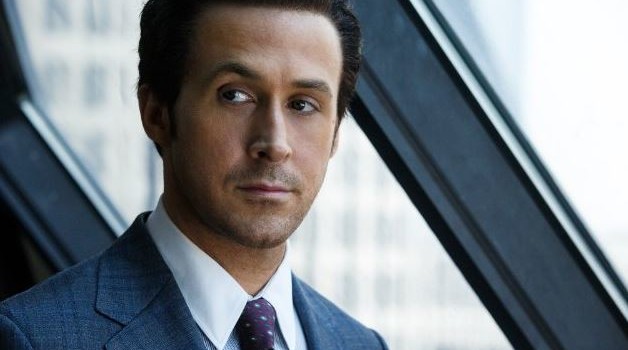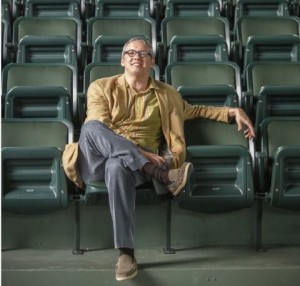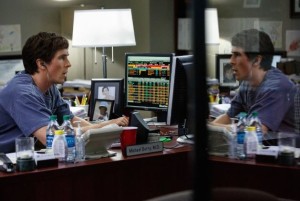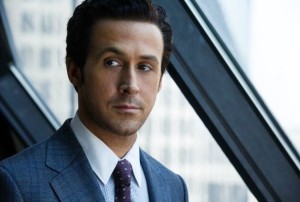Adam McKay may have seemed at the outset, a strange choice to bring author Michael Lewis’ big The Big Short to life on the silver screen. But, after witnessing the work (check out our A+ The Big Short review), he is in hindsight the most impeccable of choices. We caught up with McKay at the film’s press day and wondered what it was about Lewis’ book that compelled him to helm the film that stars Christian Bale, Steve Carell, Ryan Gosling and Brad Pitt.
“I was very interested in the financial crisis. I’d done some research for a movie I’d done called The Other Guys, which was supposed to be a comedic parable of the collapse. So I started reading all the books I could get my hands on and at a certain point when you’re doing that you come across The Big Short. I picked it up around 9:00. I was in bed, and just started reading it, and couldn’t put it down. [It] had this page turning energy to it, yet at the same time it was explaining financial esoterica to me and then at the same time the characters were heartbreaking and real and specific,” McKay said.
“It was just amazing to say it is a book that’s about mortgage-backed securities, but it was a rollercoaster ride. And when I was done with it, I just go, ‘Oh my god, this is one of the books of our times.’”
He turned to his wife and couldn’t stop talking about it. She felt he should direct it. “I was like, ‘They’re not going to let the guy who did Step Brothers do this,’” he admitted. “So, I kind of forgot about it. And luckily down the road, it came back around and I heard Plan B still had it and was able to jump into the project.”
The story has the unique element of being a study in what happened several years ago with the financial crisis that almost derailed the American (and world) economy, but in some ways, it is still happening now to many Americas. There is also a sharp warning that it could happen again from The Big Short. McKay felt both those aspects throughout the filming process.
“I can say that while we were shooting the movie, there was a distinct sense that this story was still going on around us, that in a way the ’08 collapse hadn’t ended, that all the debt had just been pushed on to different books, government books, and every day there were stories coming out about what was going on in the financial markets and so this movie was very unique in the sense that it felt like an alive movie that was happening in the moment,” McKay said.
“It wasn’t something that happened five, six years ago that we were sort of just reprising. It was constantly in flow and flux. And I’d never experienced that before. You know, I’m sure when I did Step Brothers there were two grown men living together somewhere, but there were no news reports of them, so I wasn’t aware of it. In this case, though, yeah, it was extremely exciting to have this thing be a living, breathing movie as we were doing it. And it was really cool to see all the actors picking up the language of the financial world and having questions and some of them doing research. This is a living, breathing story right now, was just charged, the entire movie, with an incredible amount of energy.”
McKay also believes that this is information that is accessible in a movie like The Big Short, but is still something that bankers and other financial types keep at a distance for the public at large. After all, as the movie shows, it was just a handful of bright minds that saw this collapse coming, long before it happened.
“You realize there’s just not that information out there, and that, you know, people aren’t as connected to these forces that have a huge impact on their life. Like I think most people still don’t really know what the TPP is. You know, they don’t really understand what the reform that was needed after this collapse. And it’s not their fault. It’s just that the information’s not in our culture, it’s not being talked about,” McKay said. “So you know, that was always a big drive for the movie — will it happen again? I’m not an economist, but it certainly seems like a lot of things weren’t fixed that they should have fixed. I really hope it doesn’t happen again, but there’s some scary indicators out there.”
McKay, the man who brought us Anchorman, Step Brothers, The Other Guys and Anchorman 2 is a veteran of comedic cinematic endeavors. He still manages to bring that element to The Big Short, and it truly helps cut through the jaw-dropping tragedy that is the destruction of the world economy by a few greedy souls.
The helmer also used famous faces to literally pause his movie’s narrative and explain what’s going on in a manner that even the most naïve financial mind can understand. There are cameos from Margot Robbie to Selena Gomez.
“Well, I think the idea goes back to, once again, what is our popular culture telling us? So the idea of taking these pop icons, these familiar faces that we’re used to seeing in a very fun, entertaining format, suddenly telling us real, salient financial information. In the case of Selena Gomez, you know, we know her as a pop star, and then suddenly she’s explaining one of the more complex financial instruments that you can buy, that was definitely a theme and a through line of the movie,” McKay said.
“We also knew too that there’s just no way to explain these complex instruments without some sort of device. And when the idea came about of like well let’s play with pop icons. Let’s play with our popular culture, somehow it felt right. And we were doing that too with all the cutaways of what was going on out in the world — showing the iPhones being sold, showing rap videos, like what were we all thinking about when this was going on? ‘Cause like one of the tricky things you get with financial movies sometimes is it can end up just being a lot of scenes in offices, which certainly there are in this movie, but we wanted it to make it feel like it connected to the world at large, especially for the collapse, when people really were suffering. I think it connected to all of that.”




